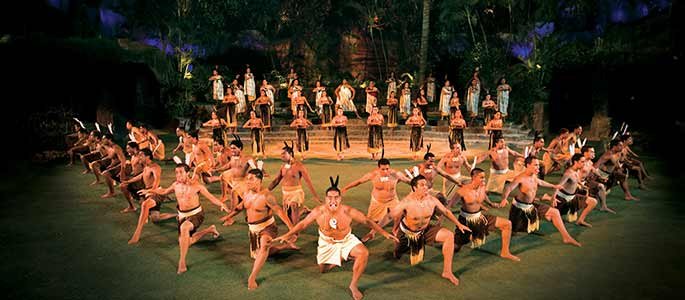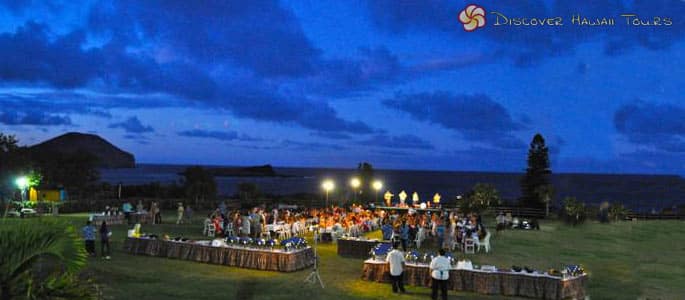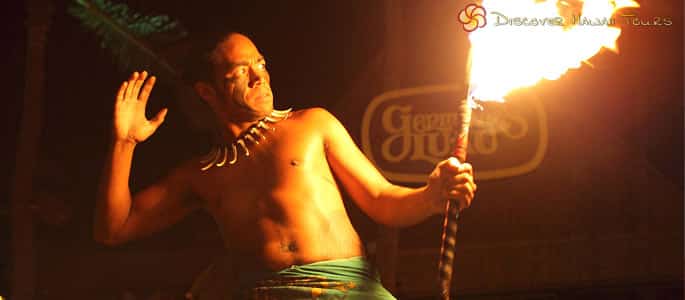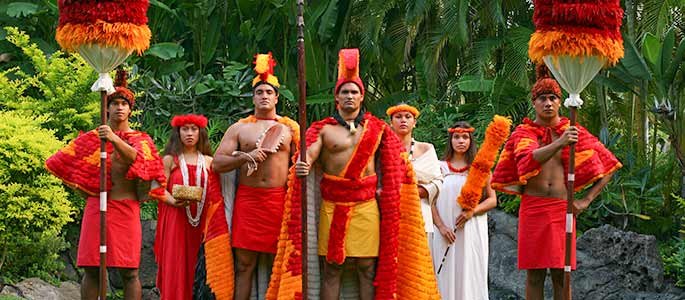Hawaiian Luaus
The History and Evolution of the Hawaiian Luau.
A luau is certainly synonymous with Hawaii. The best Maui luaus consist of a buffet feast with drinks, music, and exciting performances that embrace the traditions and culture of ancient Polynesia and Hawaii. It is an event that is enjoyed by residents and visitors alike.
Luau History
Prior to the 19th century, the ancient Hawaiian religion forbade men and women to eat together during these events. The commoners, or general public as well as all women, regardless of rank, were banned from consuming certain foods eaten at the feast.
Originally referred to as ‘aha ‘aina, which translates to ‘gathering meal’, they consisted of delicacies including bananas, pork, and reef fish called moi. These foods were representative of strength, achievement, and virtues, and were therefore only eaten by the King and chiefs. These early tribes viewed the segregated celebrations as a way to honor the gods.
King Kamehameha II
During 1819, under the rule of King Kamehameha II, these sacred traditions were abolished. The king’s new ruling allowed women (and children) to join in the feast, which enabled him to celebrate alongside his mother and father. Hence, the ‘aha ‘aina became known as the luau.
The name luau actually comes from a beloved food always served at celebrations that consist of chicken combined with tender taro leaves and baked in coconut milk.
The Traditional Luau
The traditional luau setting always took place on the floor where it was covered with Hala tree leaves or lauhala mats. Native plants, nuts, and flowers decorated the mats, filling the air with fragrance. Customary Polynesian and Hawaiian dishes were served, such as poi, pork, salmon, dried fish, sweet potatoes, and bananas. No utensils were used at these festivities; everything was eaten with the fingers.
These lavish events provided extraordinary amounts of food and served large numbers of people, especially the royal luaus. For instance, one of the largest took place in 1847 under King Kamehameha III, where more than 1,000 people were in attendance. The feast comprised of 271 pigs, more than 2200 coconuts, 5,000+ saltwater, and freshwater fish, and 482 poi-filled calabash gourds.
While traditional cuisine has always been a major part of the luau, these celebratory events used to honor weddings, birthdays, graduations, and more also involve customary music along with Polynesian and traditional Hawaiian hula dances.
How Luaus Have Evolved
With time, luaus have evolved. They are no longer as extravagant in size, décor, or abundance of food. Utensils are used unlike in ancient times, and food is not prepared in the traditional way.
The traditional luaus involved participants arriving early to witness the kalua pig being placed in the underground pit and prepared for cooking. As people awaited the food to be ready, they enjoyed socializing. While the privately held luaus that take place privately among local residents might not involve the same extent of preparation or hours of celebration, nevertheless they are still rich with culture.
How Tourism Impacted the Luau
Beginning in the 1930s, Hawaii experienced a growth in popularity, as ocean liners brought in tourists. The visitors were thrilled to experience the local culture, and as air flight became more affordable, the growth in tourism continued. Eventually, Hawaii was exemplified by images of ukuleles, tiki torches, hula girls, and luaus.
Today, many of the Maui luaus and other Maui activities enjoyed by tourists and visitors consist of the same traditional foods and dance; yet also combine lively entertainment that has evolved over time. From wearing leis to feasting on pork and poi, and watching Polynesian fire knife dancing and learning how to hula dance, there is an array of luau experiences to participate in.
The Polynesian Influence On Hawaii
The customs of Hawaii are largely influenced by ancient Polynesia, and rightly so. This group of brave seafarers is revered as great explorers, having explored much of the Pacific long before European voyagers. Polynesians first inhabited Hawaii around 400 AD. Prior to that, no one lived on any of the Hawaiian Islands. Hawaii got its name from the Polynesians when they initially set foot on the island. Derived from the Polynesian word, Havaiki, which means homeland, Hawaii became their home. Over time they spread throughout the major Hawaiian Islands and were the only inhabitants until 1000 AD when the Tahitians landed there. The Tahitians, also descendants of Polynesians soon took over the Hawaiian Islands, dominating the first settlers and forcing them into the mountains to live.
Cultures Began to Blend
The Polynesians of Tahiti went on to enforce the hierarchical order, designating the social classes, religious beliefs, and the segregation of people based on rank. From designating priests, Ali’i or chiefs, and imposing restrictions and exclusion in daily life as well as celebrations, is how many traditions of ancient luaus came into being.
In addition to the segregation, they are also credited for implementing many of the enjoyable aspects too. For example, the hula dance, initially practiced as an art traditionally conveyed historical stories of the people. And the lei custom was also adopted from the Polynesians, which was used as a way to enhance beauty and individuality, as well as being a symbol of peace.
Final Words
While luaus have changed drastically since the beginning, the basis of the celebration is still very much alive. From the locals incorporating their own familial customs into the luau to it being a fun way to introduce visitors to the Hawaiian culture, the correlation between Polynesian culture and ancient Hawaii still plays a role in life today. This is just one small example of why keeping history and heritage alive is so important.












